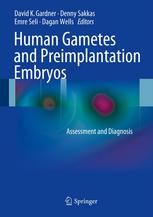

Most ebook files are in PDF format, so you can easily read them using various software such as Foxit Reader or directly on the Google Chrome browser.
Some ebook files are released by publishers in other formats such as .awz, .mobi, .epub, .fb2, etc. You may need to install specific software to read these formats on mobile/PC, such as Calibre.
Please read the tutorial at this link: https://ebookbell.com/faq
We offer FREE conversion to the popular formats you request; however, this may take some time. Therefore, right after payment, please email us, and we will try to provide the service as quickly as possible.
For some exceptional file formats or broken links (if any), please refrain from opening any disputes. Instead, email us first, and we will try to assist within a maximum of 6 hours.
EbookBell Team

5.0
98 reviewsIn recent years, the advancing science and increasing availability of assisted reproduction have given new hope to infertile couples. However, the use of IVF and ART has also led to marked increases in the number of multiple-infant live births. This poses a public health concern, as these neonates have a higher rate of pre-term delivery, compromising their survival chances and increasing their risk of lifelong disability. By optimizing the selection of gametes and embryos with high probabilities of implantation, it is possible to reduce the number of embryos transferred and, by extension, the number of high-risk multiple gestations, while maintaining or increasing pregnancy rates.
Human Gametes and Preimplantation Embryos: Assessment and Diagnosis provides a broad yet concise overview of established and developing methodologies for assessment of gamete and embryo viability in assisted reproduction. This book elucidates the best practices for precisely selecting viable specimens based on morphology and cleavage rate and covers the spectrum of emerging adjunctive technologies for predicting reproductive potential. The authors present their extensive knowledge of “omics” approaches (genomics, transcriptomics, proteomics, and metabolomics), with unbiased delineation of the associated advantages and potential pitfalls. This valuable clinical resource is well suited to infertility specialists, Ob/Gyn physicians, IVF laboratory technicians, and researchers in the fields of embryology and reproductive medicine.